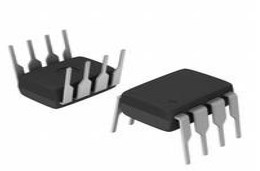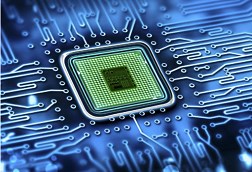LM385 Voltage Regulator Diode: Pinout, Equivalent and Datasheet
0°C~70°C TA Fixed 1.27mm PMIC LM385 TO-226-3, TO-92-3 (TO-226AA)
Unit Price: $0.397095
Ext Price: $0.40









0°C~70°C TA Fixed 1.27mm PMIC LM385 TO-226-3, TO-92-3 (TO-226AA)
The LM385 series are micropower two−terminal bandgap voltage regulator diodes. Designed to operate over a wide current range of 10 μA to 20 mA, these devices feature exceptionally low dynamic impedance, low noise and stable operation over time and temperature. Furthermore, Huge range of Semiconductors, Capacitors, Resistors and IcS in stock. Welcome RFQ.

What is Zener Diode ? Zener Diode as a Voltage Regulator Explained (with solved Examples)
LM385 Pinout

Pinout
LM385 CAD Model

Footprint

3D Model
LM385 Overview
The LM385 series are micropower two−terminal bandgap voltage regulator diodes. Designed to operate over a wide current range of 10 μA to 20 mA, these devices feature exceptionally low dynamic impedance, low noise and stable operation over time and temperature. Tight voltage tolerances are achieved by on−chip trimming. The large dynamic operating range enables these devices to be used in applications with widely varying supplies with excellent regulation. Extremely low operating current make these devices ideal for micropower circuitry like portable instrumentation, regulators and other analog circuitry where extended battery life is required. The LM385 series are packaged in a low cost TO−226 plastic case and are available in two voltage versions of 1.235 V and 2.500 V as denoted by the device suffix (see Ordering Information table). The LM385 is specified over a 0°C to +70°C temperature range. The LM385 is also available in a surface mount plastic package in voltages of 1.235 V and 2.500 V.
This article provides you with a basic overview of the LM385 Voltage Regulator Diode, including its pin descriptions, features and specifications, etc., to help you quickly understand what LM385 is.
LM385 Features
● Operating Current from 10 μA to 20 mA
● 1.0%, 1.5%, 2.0% and 3.0% Initial Tolerance Grades
● Low Temperature Coefficient
● 1.0 Ω Dynamic Impedance
● Surface Mount Package Available
● The Device is Pb−Free and is RoHS Compliant
Specifications
- TypeParameter
- Lifecycle Status
Lifecycle Status refers to the current stage of an electronic component in its product life cycle, indicating whether it is active, obsolete, or transitioning between these states. An active status means the component is in production and available for purchase. An obsolete status indicates that the component is no longer being manufactured or supported, and manufacturers typically provide a limited time frame for support. Understanding the lifecycle status is crucial for design engineers to ensure continuity and reliability in their projects.
ACTIVE (Last Updated: 23 hours ago) - Factory Lead Time13 Weeks
- Mount
In electronic components, the term "Mount" typically refers to the method or process of physically attaching or fixing a component onto a circuit board or other electronic device. This can involve soldering, adhesive bonding, or other techniques to secure the component in place. The mounting process is crucial for ensuring proper electrical connections and mechanical stability within the electronic system. Different components may have specific mounting requirements based on their size, shape, and function, and manufacturers provide guidelines for proper mounting procedures to ensure optimal performance and reliability of the electronic device.
Through Hole - Mounting Type
The "Mounting Type" in electronic components refers to the method used to attach or connect a component to a circuit board or other substrate, such as through-hole, surface-mount, or panel mount.
Through Hole - Package / Case
refers to the protective housing that encases an electronic component, providing mechanical support, electrical connections, and thermal management.
TO-226-3, TO-92-3 (TO-226AA) - Number of Pins3
- Weight4.535924g
- Operating Temperature
The operating temperature is the range of ambient temperature within which a power supply, or any other electrical equipment, operate in. This ranges from a minimum operating temperature, to a peak or maximum operating temperature, outside which, the power supply may fail.
0°C~70°C TA - Packaging
Semiconductor package is a carrier / shell used to contain and cover one or more semiconductor components or integrated circuits. The material of the shell can be metal, plastic, glass or ceramic.
Bulk - Tolerance
In electronic components, "tolerance" refers to the acceptable deviation or variation from the specified or ideal value of a particular parameter, such as resistance, capacitance, or voltage. It indicates the range within which the actual value of the component can fluctuate while still being considered acceptable for use in a circuit. Tolerance is typically expressed as a percentage or a specific value and is important for ensuring the accuracy and reliability of electronic devices. Components with tighter tolerances are more precise but may also be more expensive. It is crucial to consider tolerance when selecting components to ensure proper functionality and performance of the circuit.
-2.4% +2.01% - JESD-609 Code
The "JESD-609 Code" in electronic components refers to a standardized marking code that indicates the lead-free solder composition and finish of electronic components for compliance with environmental regulations.
e3 - Pbfree Code
The "Pbfree Code" parameter in electronic components refers to the code or marking used to indicate that the component is lead-free. Lead (Pb) is a toxic substance that has been widely used in electronic components for many years, but due to environmental concerns, there has been a shift towards lead-free alternatives. The Pbfree Code helps manufacturers and users easily identify components that do not contain lead, ensuring compliance with regulations and promoting environmentally friendly practices. It is important to pay attention to the Pbfree Code when selecting electronic components to ensure they meet the necessary requirements for lead-free applications.
yes - Part Status
Parts can have many statuses as they progress through the configuration, analysis, review, and approval stages.
Active - Moisture Sensitivity Level (MSL)
Moisture Sensitivity Level (MSL) is a standardized rating that indicates the susceptibility of electronic components, particularly semiconductors, to moisture-induced damage during storage and the soldering process, defining the allowable exposure time to ambient conditions before they require special handling or baking to prevent failures
1 (Unlimited) - Number of Terminations3
- ECCN Code
An ECCN (Export Control Classification Number) is an alphanumeric code used by the U.S. Bureau of Industry and Security to identify and categorize electronic components and other dual-use items that may require an export license based on their technical characteristics and potential for military use.
EAR99 - Temperature Coefficient
The resistance-change factor per degree Celsius of temperature change is called the temperature coefficient of resistance. This factor is represented by the Greek lower-case letter “alpha” (α). A positive coefficient for a material means that its resistance increases with an increase in temperature.
80ppm/°C Typical - Terminal Finish
Terminal Finish refers to the surface treatment applied to the terminals or leads of electronic components to enhance their performance and longevity. It can improve solderability, corrosion resistance, and overall reliability of the connection in electronic assemblies. Common finishes include nickel, gold, and tin, each possessing distinct properties suitable for various applications. The choice of terminal finish can significantly impact the durability and effectiveness of electronic devices.
Tin (Sn) - Terminal Position
In electronic components, the term "Terminal Position" refers to the physical location of the connection points on the component where external electrical connections can be made. These connection points, known as terminals, are typically used to attach wires, leads, or other components to the main body of the electronic component. The terminal position is important for ensuring proper connectivity and functionality of the component within a circuit. It is often specified in technical datasheets or component specifications to help designers and engineers understand how to properly integrate the component into their circuit designs.
BOTTOM - Peak Reflow Temperature (Cel)
Peak Reflow Temperature (Cel) is a parameter that specifies the maximum temperature at which an electronic component can be exposed during the reflow soldering process. Reflow soldering is a common method used to attach electronic components to a circuit board. The Peak Reflow Temperature is crucial because it ensures that the component is not damaged or degraded during the soldering process. Exceeding the specified Peak Reflow Temperature can lead to issues such as component failure, reduced performance, or even permanent damage to the component. It is important for manufacturers and assemblers to adhere to the recommended Peak Reflow Temperature to ensure the reliability and functionality of the electronic components.
260 - Number of Functions1
- Terminal Pitch
The center distance from one pole to the next.
1.27mm - Current Rating
Current rating is the maximum current that a fuse will carry for an indefinite period without too much deterioration of the fuse element.
20mA - Time@Peak Reflow Temperature-Max (s)
Time@Peak Reflow Temperature-Max (s) refers to the maximum duration that an electronic component can be exposed to the peak reflow temperature during the soldering process, which is crucial for ensuring reliable solder joint formation without damaging the component.
40 - Base Part Number
The "Base Part Number" (BPN) in electronic components serves a similar purpose to the "Base Product Number." It refers to the primary identifier for a component that captures the essential characteristics shared by a group of similar components. The BPN provides a fundamental way to reference a family or series of components without specifying all the variations and specific details.
LM385 - Pin Count
a count of all of the component leads (or pins)
3 - Number of Outputs1
- Output Voltage
Output voltage is a crucial parameter in electronic components that refers to the voltage level produced by the component as a result of its operation. It represents the electrical potential difference between the output terminal of the component and a reference point, typically ground. The output voltage is a key factor in determining the performance and functionality of the component, as it dictates the level of voltage that will be delivered to the connected circuit or load. It is often specified in datasheets and technical specifications to ensure compatibility and proper functioning within a given system.
1.235V - Output Type
The "Output Type" parameter in electronic components refers to the type of signal or data that is produced by the component as an output. This parameter specifies the nature of the output signal, such as analog or digital, and can also include details about the voltage levels, current levels, frequency, and other characteristics of the output signal. Understanding the output type of a component is crucial for ensuring compatibility with other components in a circuit or system, as well as for determining how the output signal can be utilized or processed further. In summary, the output type parameter provides essential information about the nature of the signal that is generated by the electronic component as its output.
Fixed - Max Output Current
The maximum current that can be supplied to the load.
20mA - Trim/Adjustable Output
Trim or adjustable output refers to the ability of an electronic component, such as a voltage regulator or power supply, to produce an output voltage that can be finely tuned or adjusted to meet specific requirements. This feature allows for precise control over the output voltage level, accommodating variations in load conditions or desired operational parameters. Users can typically achieve this adjustment through external resistors, potentiometers, or internal calibration mechanisms, ensuring optimal performance in diverse applications.
NO - Analog IC - Other Type
Analog IC - Other Type is a parameter used to categorize electronic components that are integrated circuits (ICs) designed for analog signal processing but do not fall into more specific subcategories such as amplifiers, comparators, or voltage regulators. These ICs may include specialized analog functions such as analog-to-digital converters (ADCs), digital-to-analog converters (DACs), voltage references, or signal conditioning circuits. They are typically used in various applications where precise analog signal processing is required, such as in audio equipment, instrumentation, communication systems, and industrial control systems. Manufacturers provide detailed specifications for these components to help engineers select the most suitable IC for their specific design requirements.
TWO TERMINAL VOLTAGE REFERENCE - Max Output Voltage
The maximum output voltage refers to the dynamic area beyond which the output is saturated in the positive or negative direction, and is limited according to the load resistance value.
1.235V - Halogen Free
The term "Halogen Free" in electronic components refers to a specific characteristic of the materials used in the manufacturing of the component. Halogens are a group of elements that include fluorine, chlorine, bromine, iodine, and astatine. These elements are commonly used in flame retardants and other materials in electronics. However, the presence of halogens can pose environmental and health risks when the components are disposed of or recycled.Therefore, electronic components labeled as "Halogen Free" are manufactured without the use of halogenated materials. This designation indicates that the components do not contain any halogens, making them safer for the environment and human health. Halogen-free components are becoming increasingly popular in the electronics industry due to the growing awareness of environmental concerns and regulations regarding hazardous substances in electronic products.
Halogen Free - Reference Voltage
A voltage reference is an electronic device that ideally produces a fixed (constant) voltage irrespective of the loading on the device, power supply variations, temperature changes, and the passage of time. Voltage references are used in power supplies, analog-to-digital converters, digital-to-analog converters, and other measurement and control systems. Voltage references vary widely in performance; a regulator for a computer power supply may only hold its value to within a few percent of the nominal value, whereas laboratory voltage standards have precisions and stability measured in parts per million.
1.235V - Reference Type
a code object that is not stored directly where it is created, but that acts as a kind of pointer to a value stored elsewhere.
Shunt - Min Output Voltage
Min Output Voltage refers to the lowest voltage level that an electronic component, such as a voltage regulator or power supply, can provide reliably under specified conditions. It indicates the minimum threshold required for proper operation of connected devices. Operating below this voltage may lead to device malfunction or failure to operate as intended.
1.235V - Current - Cathode
Current - Cathode refers to the flow of electric current through the cathode terminal of an electronic component, such as a diode or a vacuum tube. It represents the amount of charge carriers, typically electrons, moving towards the cathode during operation. This parameter is crucial for determining the component's functionality and performance characteristics, as it influences the efficiency and stability of the circuit. High cathode current can indicate increased power consumption or potential overheating issues if not managed properly.
20μA - Noise - 10Hz to 10kHz
The parameter "Noise - 10Hz to 10kHz" in electronic components refers to the level of unwanted electrical signals or interference present within the specified frequency range of 10Hz to 10kHz. This noise can be generated by various sources such as electromagnetic interference, thermal noise, or crosstalk. It is important to minimize this noise in electronic components as it can degrade the performance of the device or system by affecting signal quality or introducing errors. Manufacturers often provide specifications for noise levels to help designers select components that meet their requirements for noise performance.
60μVrms - Height5.33mm
- Length5.2mm
- Width4.19mm
- REACH SVHC
The parameter "REACH SVHC" in electronic components refers to the compliance with the Registration, Evaluation, Authorization, and Restriction of Chemicals (REACH) regulation regarding Substances of Very High Concern (SVHC). SVHCs are substances that may have serious effects on human health or the environment, and their use is regulated under REACH to ensure their safe handling and minimize their impact.Manufacturers of electronic components need to declare if their products contain any SVHCs above a certain threshold concentration and provide information on the safe use of these substances. This information allows customers to make informed decisions about the potential risks associated with using the components and take appropriate measures to mitigate any hazards.Ensuring compliance with REACH SVHC requirements is essential for electronics manufacturers to meet regulatory standards, protect human health and the environment, and maintain transparency in their supply chain. It also demonstrates a commitment to sustainability and responsible manufacturing practices in the electronics industry.
No SVHC - Radiation Hardening
Radiation hardening is the process of making electronic components and circuits resistant to damage or malfunction caused by high levels of ionizing radiation, especially for environments in outer space (especially beyond the low Earth orbit), around nuclear reactors and particle accelerators, or during nuclear accidents or nuclear warfare.
No - RoHS Status
RoHS means “Restriction of Certain Hazardous Substances” in the “Hazardous Substances Directive” in electrical and electronic equipment.
ROHS3 Compliant - Lead Free
Lead Free is a term used to describe electronic components that do not contain lead as part of their composition. Lead is a toxic material that can have harmful effects on human health and the environment, so the electronics industry has been moving towards lead-free components to reduce these risks. Lead-free components are typically made using alternative materials such as silver, copper, and tin. Manufacturers must comply with regulations such as the Restriction of Hazardous Substances (RoHS) directive to ensure that their products are lead-free and environmentally friendly.
Lead Free
LM385 Functional Block Diagram

Representative Schematic Diagram
LM385 Equivalent
| Model number | Manufacturer | Description |
| LM385LPRE3-1-2 | Texas Instruments | 1.235-V, 2%, 0°C to 70°C, micropower voltage reference 3-TO-92 0 to 70 |
| LM385Z-1.2RA | Motorola Semiconductor Products | Two Terminal Voltage Reference, 1 Output, 1.235V, BIPolar, PBCY3, PLASTIC, TO-226AA, 3 PIN |
| LM385BYZ-1.2 | Texas Instruments | 1-OUTPUT TWO TERM VOLTAGE REFERENCE, 1.235V, PBCY3, PLASTIC, TO-92, 3 PIN |
| LM285BXM-1.2X | Texas Instruments | 1-OUTPUT TWO TERM VOLTAGE REFERENCE, 1.235V, PDSO8, SO-8 |
| LM385Z-1.2 | Motorola Mobility LLC | 1-OUTPUT TWO TERM VOLTAGE REFERENCE, 1.235V, PBCY3, PLASTIC, TO-226AA, 3 PIN |
| LM385LP-1.2 | Linfinity Microelectronics | Two Terminal Voltage Reference, 1.2V, BIPolar, PBCY3, PLASTIC, TO-92 |
| LM385BZ-1.2RA | On Semiconductor | MicroPower Voltage Reference Diodes 1.2 V, ±1%, TO-92 (TO-226) 5.33mm Body Height, 2000-REEL |
| LM385CZB-1.2 | Telcom Semiconductor Inc | Two Terminal Voltage Reference, 1 Output, 1.235V, BIPolar, PBCY3 |
| LM385BXZ-1.2X | Texas Instruments | 1-OUTPUT TWO TERM VOLTAGE REFERENCE, 1.235V, PBCY3, PLASTIC, TO-92, 3 PIN |
Parts with Similar Specs
- ImagePart NumberManufacturerPackage / CaseNumber of PinsMax Output CurrentMin Output VoltageOutput VoltageMax Output VoltageToleranceTemperature CoefficientView Compare
LM385Z-1.2G
TO-226-3, TO-92-3 (TO-226AA)
3
20 mA
1.235 V
1.235 V
1.235 V
-2.4%, +2.01%
80ppm/°C Typical
TO-226-3, TO-92-3 (TO-226AA)
3
20 mA
1.235 V
1.235 V
1.235 V
±1%
80ppm/°C Typical
TO-226-3, TO-92-3 (TO-226AA)
3
20 mA
1.235 V
1.235 V
1.235 V
±1%
80ppm/°C Typical
TO-226-3, TO-92-3 (TO-226AA)
3
20 mA
1.24 V
5.3 V
5.3 V
±2%
150ppm/°C
TO-226-3, TO-92-3 (TO-226AA)
3
20 mA
1.223 V
1.235 V
1.235 V
±1%
20ppm/°C Typical
LM385 Applications
● Portable Instrumentation
● Regulators
● Analog Circuitry
LM385 Package

TO−92(TO−226) Package
LM385 Manufacturer
On Semiconductor (Nasdaq: ON) is a manufacturer engaging itself in reducing energy use. It features a comprehensive portfolio of power, signal management, and logic, custom solutions that are energy efficient. It acts as a world-class supply chain with high reliability and a network of manufacturing facilities, sales, offices, and design centers in key markets through North America, Europe, and the Asia Pacific regions.
Trend Analysis
Datasheet PDF
- Datasheets :
- Environmental Information :
- PCN Design/Specification :
What is the difference between the rated temperature range of LM285 and LM385?
The LM285 is specified over a −40°C to +85°C temperature range while the LM385 is rated from 0°C to +70°C.
What type of tube is LM385?
The LM385 series are micro-power two-end bandgap regulator diodes. These devices are designed to operate in a wide current range from 10 µA to 20 mA, with extremely low dynamic impedance, low noise, and stable operation over time and temperature. Strict voltage tolerance can be achieved through on-chip fine-tuning. The large dynamic operating range allows these devices to be used in applications with a wide range of power supply variations and excellent regulation performance. The extremely low operating current makes these devices ideal for micropower circuits that need to extend battery life, such as portable instruments, regulators, and other analog circuits.
 SR621SW Silver Oxide Watch Battery 1.55V, 23 mAh : SR621SW VS SR626SW, Datasheet and Equivalents
SR621SW Silver Oxide Watch Battery 1.55V, 23 mAh : SR621SW VS SR626SW, Datasheet and Equivalents23 March 202214501
 NEMA17 Stepper Motor: Datasheet pdf, 1.5 A 1.8° Stepper Motor and Dimensions
NEMA17 Stepper Motor: Datasheet pdf, 1.5 A 1.8° Stepper Motor and Dimensions29 November 202113385
 Unveiling the Microchip PIC32MX1XX/2XX 32-bit Microcontrollers: A Technical Investigation
Unveiling the Microchip PIC32MX1XX/2XX 32-bit Microcontrollers: A Technical Investigation29 February 2024124
 A Comprehensive Guide to LTC7103IUHE#TRPBF DC-DC Switching Regulator
A Comprehensive Guide to LTC7103IUHE#TRPBF DC-DC Switching Regulator06 March 2024119
 74HC00 Quadruple 2-Input NAND Gates: 74LS Series vs. 74HC Series
74HC00 Quadruple 2-Input NAND Gates: 74LS Series vs. 74HC Series11 November 20215343
![LM324 Quad OP-AMP IC[FAQ+Video]: Datasheet, LM324 vs LM358, and Pinout](https://res.utmel.com/Images/Article/2e9bb7df-c9ab-4d8f-8e8d-fbf5e8ad622e.jpg) LM324 Quad OP-AMP IC[FAQ+Video]: Datasheet, LM324 vs LM358, and Pinout
LM324 Quad OP-AMP IC[FAQ+Video]: Datasheet, LM324 vs LM358, and Pinout06 May 202215212
 TDA1517P Power Amplifier: Circuit, Replacement and Pinout
TDA1517P Power Amplifier: Circuit, Replacement and Pinout20 August 202118561
 LF353N Dual JFET Input Op-Amp: Datasheet, Pinout and Equivalents
LF353N Dual JFET Input Op-Amp: Datasheet, Pinout and Equivalents15 September 202110532
 Electric Car Rechargeable Batteries: How Long Do They Last?
Electric Car Rechargeable Batteries: How Long Do They Last?13 April 20233628
 What is a Digital Integrated Circuit and How Do We Use It?
What is a Digital Integrated Circuit and How Do We Use It?20 October 202517057
 Will MicroLED replace LCD and OLED?
Will MicroLED replace LCD and OLED?31 August 20213048
 What is RF Filter?
What is RF Filter?09 December 20217523
 RF Modulator: Working Principle and Development Trend
RF Modulator: Working Principle and Development Trend21 April 20216233
 What is PCB Reflow? High-Speed Signal Reflow Path Analysis
What is PCB Reflow? High-Speed Signal Reflow Path Analysis24 November 20212651
 What are Types and Application of Gas Sensors?
What are Types and Application of Gas Sensors?18 November 20259483
 Is ON Semiconductor's Stock Overvalued? A Detailed Analysis
Is ON Semiconductor's Stock Overvalued? A Detailed Analysis28 September 20231895
ON Semiconductor
In Stock: 40
Minimum: 1 Multiples: 1
Qty
Unit Price
Ext Price
1
$0.397095
$0.40
10
$0.374618
$3.75
100
$0.353413
$35.34
500
$0.333409
$166.70
1000
$0.314537
$314.54
Not the price you want? Send RFQ Now and we'll contact you ASAP.
Inquire for More Quantity





